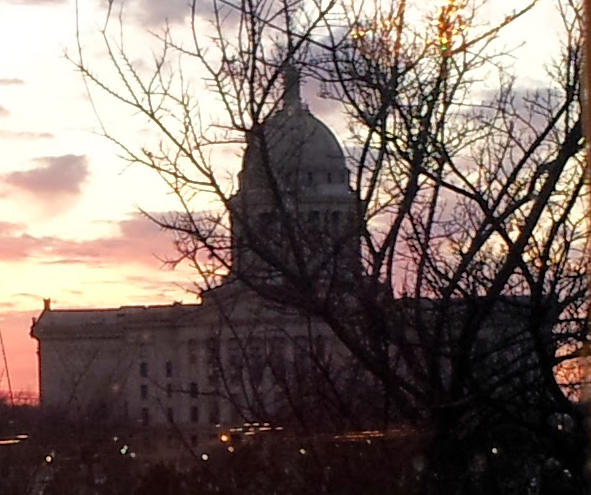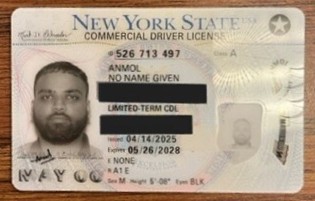The National Popular Vote Fallacy
A switch of just 271,951 votes -- just one vote out of every 373 votes cast (a number of votes that could have been switched with just one more national ad buy reminding voters of Al Gore's role in the illegal Hsi Lai Buddhist temple fundraising debacle in Los Angeles ) -- would have given Bush and Cheney a slim popular vote victory, along with the 271 to 266 vote victory (one DC elector abstained from voting) where it really counted in the Electoral College.
The Bush-Cheney victory in the Electoral College has caused liberals, who refuse to recognize the wisdom of the Founding Fathers in creating the Electoral College, to go a little bit nuts. In response, with the assistance of liberal Republicans such as former congressman John Anderson of Illinois, they've created an organization called the National Popular Vote Interstate Compact (NPVIC).
Aside from their insistence that the members of the House of Representatives be elected by direct vote of the people and that members of the Senate be elected by the political leadership of the states, i.e. the state legislatures (later overturned by the 17th Amendment), the Framers were concerned that a foreign power might one day attempt to achieve through corruption and political intrigue that which they could not achieve on the battlefield. Arguing in favor of the Electoral College, Alexander Hamilton wrote in Federalist Paper No. 68, "These most deadly adversaries of republican government (cabal, intrigue, etc.)" might come from many quarters, "but chiefly from the desire in foreign powers to gain an improper ascendant in our councils. How could they better gratify this than by raising a creature of their own to the chief magistracy of the Union?"
It was precisely for that reason that the Framers put the selection of the president and vice president into the hands of a small number of electors, described in the Federalist Papers as those "most likely to possess the information and discernment requisite to such complicated investigations" leaving the state legislatures to decide the manner by which each state's electors would be chosen. The institution they created was the Electoral College, designed specifically to prevent individuals with questionable credentials and/or allegiances from ever becoming president or vice president.
But now, in the earliest days of the 21st century, the Electoral College is under attack by those who misread or misconstrue our federal system. Since Article II, Section 1 of the Constitution gives the state legislatures the exclusive authority to determine the manner in which their state's presidential electors are chosen, the NPVIC is lobbying the legislatures to adopt a rule requiring that all of their state's electoral votes be cast for the candidates for president and vice president who received a majority of the national popular vote -- regardless of the popular vote count in their own state.
On August 8, 2011, California joined Hawaii, Illinois, Maryland, Massachusetts, New Jersey, Vermont, and Washington, plus the District of Columbia (all blue states which normally vote Democratic) in adopting the National Popular Vote rule, pledging all of their electoral votes to the candidates for president and vice president who win a majority of the national popular vote.
California's adoption of the NPVIC rule brought 131 of the needed 270 electoral votes under the popular vote rule. If and when states representing at least 270 electoral votes (a simple majority in the Electoral College) have joined the Compact, then and only then will those states be able to eliminate any possibility of ever again electing a president and vice president with less than a majority of the national popular vote.
But is it possible that the eight blue states, plus DC, that have now been drawn into the National Popular Vote movement are only "shooting themselves in the foot." Let's play a little "what if," using the results from the 2000 election in which the candidates who won the national popular vote by a razor-thin majority, lost the election in the Electoral College.
In that election it became necessary for the U.S. Supreme Court to intervene to prevent the Democrat-dominated Florida Supreme Court, which had absolutely no jurisdiction in the conduct of the Florida presidential vote count, from illegally throwing Florida's 25 electoral votes to Gore-Lieberman. The court decision allowed Bush-Cheney to retain Florida's 25 electoral votes, giving them a narrow 271-266 vote victory in the Electoral College.
But what if the National Popular Vote Interstate Compact had been in place, and Bush-Cheney had been able to attract just 271,948 more votes out of the 101,455,900 votes cast to eke out a narrow victory in the national popular vote?
Looking at the electoral vote count (electoral votes in parentheses), if the thirteen blue states of Connecticut (8), Delaware (3), Iowa (7), Maine (4), Michigan (18), Minnesota (10), Nevada (4), New Mexico (5), New York (33), Oregon (7), Pennsylvania (23), Rhode Island (4), and Wisconsin (11), with a total of 137 electoral votes, had joined the National Popular Vote Compact comprised of California (54), Hawaii (4), Illinois (22), Maryland (10), Massachusetts (12), New Jersey (15), Vermont (3), Washington (11), and the District of Columbia (2), with a total of 133 electoral votes, they would have controlled 270 electoral votes -- a simple majority in the Electoral College. However, with Bush-Cheney having eked out a razor-thin victory in the national popular vote, the states of the NPV Compact would have been required to automatically cast all 270 of their electoral votes for George Bush and Dick Cheney -- in spite of the fact that 21 of the 22 states in the Compact had cast a majority of their popular votes for Al Gore and Joe Lieberman.
So what would have been the outcome in the Electoral College? Combined with the 267 electoral votes that Bush- Cheney won in the 29 non-NPVIC states, the Electoral College vote would have been a unanimous 537-0 victory for Bush-Cheney. In other words, the proponents of the national popular vote would have insured a unanimous vote for Bush-Cheney in the Electoral College.
In its state and national platforms, the Republican Party has come out solidly in support of the Electoral College and in opposition to the National Popular Vote Interstate Compact. Were it not for the fact that conservatives and Republicans understand the purpose behind the Electoral College and support its continued existence, they might decide that, pragmatically, the national popular vote concept could inure to their benefit. In the meantime, if conservatives and Republicans feel compelled to reform the electoral process to bring the selection of presidents and vice presidents closer to the people, by far the most beneficial reform would be the adoption of the Maine-Nebraska system of awarding electoral votes.
Those who support the concept of selecting our presidents and vice presidents by national popular vote fail to understand either constitutional principles or demographic shifts. If they wish to "shoot themselves in the foot," working contrary to their own political interests, perhaps they should be allowed to do so.










Latest Commentary
Thursday 30th of October 2025
Thursday 30th of October 2025
Thursday 30th of October 2025
Thursday 30th of October 2025
Thursday 30th of October 2025
Thursday 30th of October 2025
Thursday 30th of October 2025
Thursday 30th of October 2025
Thursday 30th of October 2025